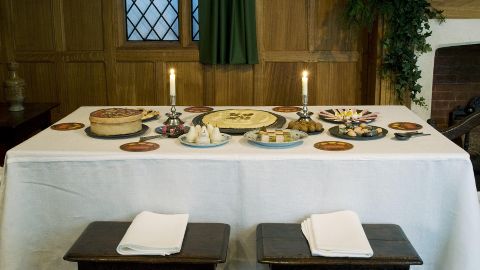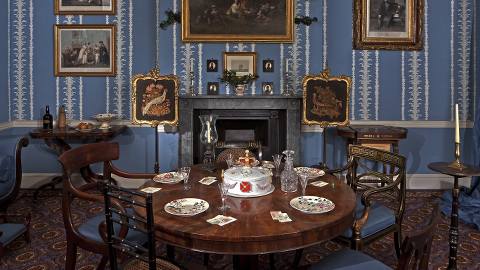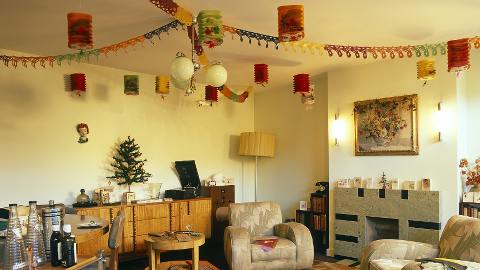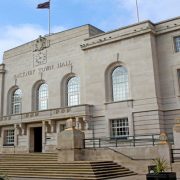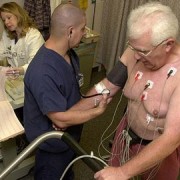Illuminated reindeers in the garden, Father Christmas themed pub-crawls, last-minute present shopping on Amazon – we all have our personal traditions over the festive season.
However, the Geffrye Museum will take visitors on a trip back in time this winter to see what Christmas has been like in English middle-class homes over the last 400 years.
The annual Christmas Past Gallery runs from November 25 of this year to January 4 2015.
In keeping with the tradition of the past 20 years, all 11 period living rooms in the museum are decorated with authentic festive decorations, lighting, music and greenery.
Visitors can discover the origins and meanings behind traditions such as decorating the tree, hanging up stockings and kissing under the mistletoe.
Christmas Past curator, Hannah Fleming, told Eastlondonlines: “We show the historical route of these traditions…Christmas is an important time in the home…[the exhibition] is a great experience for visitors.”
She added that her favourite room is the hall in 1630. This displays the second course of a New Year’s Day feast. Among the savoury dishes, there are also sugary sweet dishes – an expensive luxury at that time – playfully masquerading as bacon, eggs and walnuts, as well as a dish similar to Turkish delight made of boiled milk jelly.
Fleming explained that, despite what we often think, religion was not the focal point of Christmas in the 17th century but “a time for drinking, feasting and playing games,” much like today.
Another room in the exhibition is a drawing room from 1830. Old traditions began to reappear in the Victorian era. Cakes became increasingly more elaborate with sugar frosting and gilded paper trimmings, adorned with decorative figures made of plaster of Paris or sugar paste.
Other examples include a 1930’s cocktail party complete with Chinese lanterns and bottles of gin and a 1965 living room at Christmas. All furnishings and objects are original as the museum avoids replicas as much as possible.
This year is a particularly important year for the museum as they celebrate 100 years since the beginning of the museum and 300 hundred years since the alms-houses were opened.
Originally “provision for the needy” back in 1614, these 14 four-roomed alms-houses lodged an inhabitant in each room. Dwellers would carry out all their daily routines, from cooking to washing, in one room.
However, due to increased urbanisation over the centuries, the pensioners became unhappy with the unhygienic accommodation and unsavoury neighbourhood.
The alms-houses were eventually bought by the Peabody Housing Association and finally sold to the London County Council in 1911. The museum itself, now an independent charitable trust, opened in 1914.
Free events are also held at the Geffrye Museum over the festive period. On December 4, 5:00-8:00pm there is a candlelit “Georgian Christmas” open evening where visitors can listen to festive music, eat and take part in a decoration-making workshops.
On January 6, 3:30-5:30pm the museum will celebrate “Farewell to Christmas”, where holly and the ivy are burnt and there is carol singing, mulled wine and the Twelfth Night cake.
When asked about the changing face of Christmas over the centuries, Fleming said she believed many people want to get back to the idea of a “pure” Christmas, without the commercial connotations it has accumulated over the years. The Geffrye Museum provides just that.

